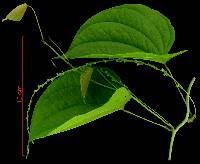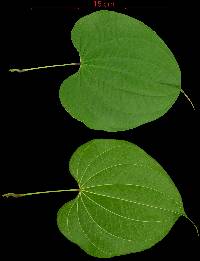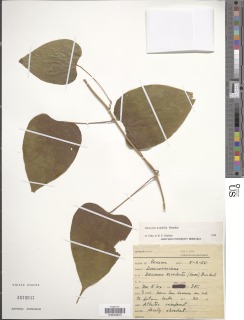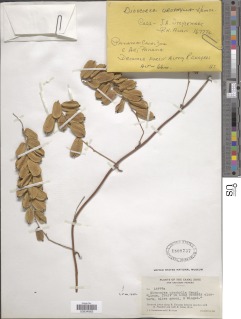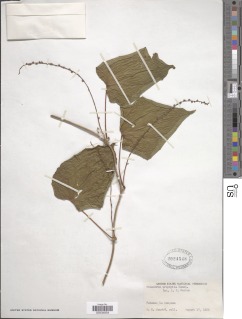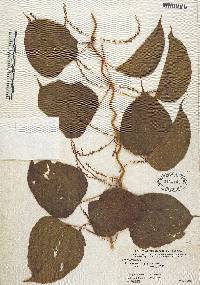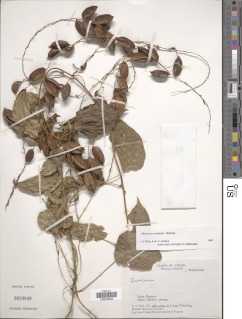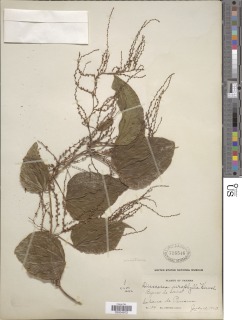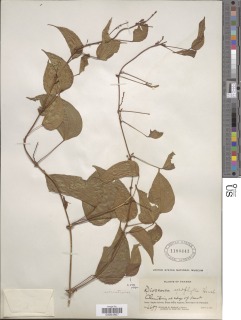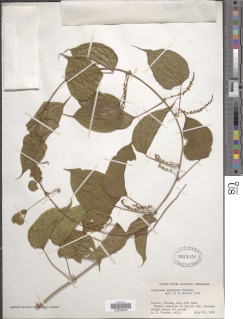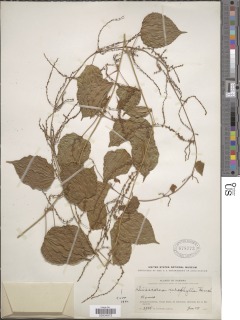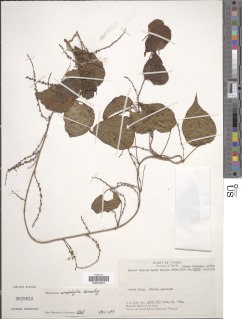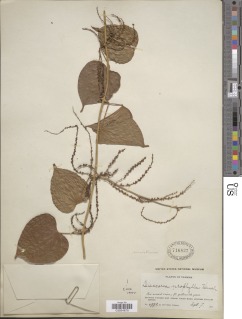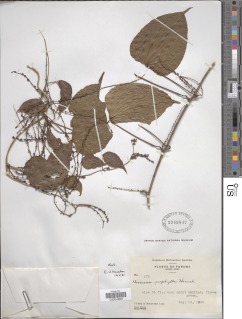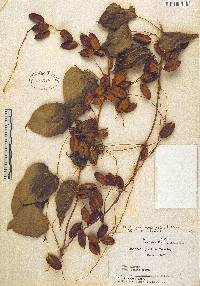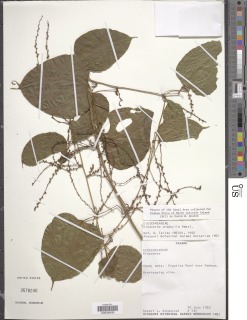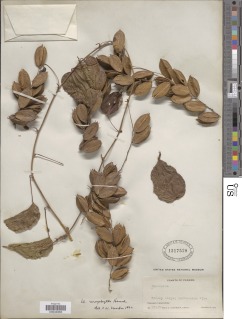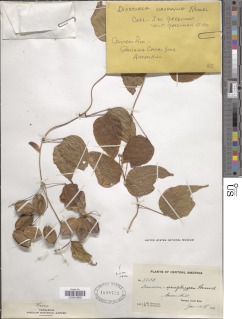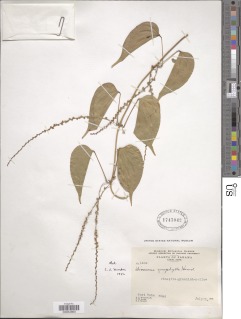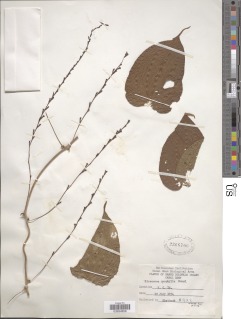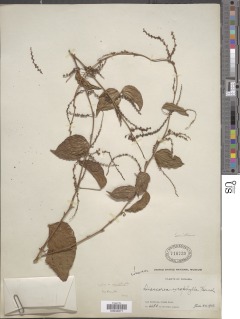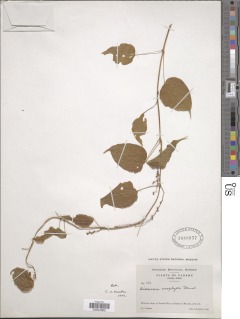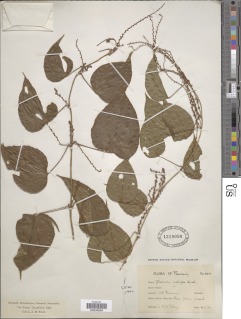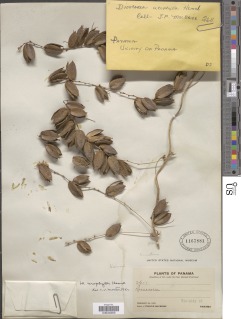

|
|
|
|
Family: Dioscoreaceae
|
Dioecious twining vine, glabrous; stems usually twisting to the left, with short broad-based spines at the base of larger leaves. Leaves alternate to opposite; petioles 3.5-9.5 cm long (to 14 cm long on juvenile plants); blades ovate, narrowly long-acuminate, truncate to weakly cordate at base, 5-14 cm long, 3-8.5 (14) cm wide, thin, conspicuously pellucid-lineolate and glandular-dotted on lower surface (glands sparse to lacking on upper surface); veins 7-9, palmate. Staminate spikes 1-3 per axil, to ca 50 cm long (usually less than 10 cm), unbranched or branched (especially when long); flowers greenish-yellow, solitary, sessile; tepals oblong, 2-3 mm long, acute at apex, connate at base, spreading at anthesis; stamens 6 (in 2 whorls of 3 each), ca 1.3 mm long, inserted on and held at about same level as tepals; anthers introrse; pollen golden, tacky; pistillode much shorter than filaments, trilobate. Pistillate spikes 1 per axi1,10-20 cm long; flowers sessile; tepals 6, 2-3 mm long; stamens 6 (probably nonfunctional but with some pollen), adnate to lower part of tepal, ca 0.7 mm long; ovary glabrous, ca 3.5 mm long; style single, 1.3-2 mm long, conical; stigmas bilobed, flattened. Capsules 3-winged, oblong-elliptic, acute or apiculate at apex, +/- rounded below, 2.3-3 cm long, 1.3-1.6 cm wide, 3-valved, the valves coriaceous, tuberculate (especially medially); seeds samaroid, 2-2.5 cm long (including wing), 6-8 mm wide, brown. Croat 6704, Foster 1177. Occasional, in the forest. Flowers principally in the rainy season (June to September, occasionally as early as April). The fruits mature during the following dry season (December to April). Panama and Peru; probably in intervening regions as well. In Panama, known from drier regions of tropical moist forest in the Canal Zone (both slopes) and Herrera, Panamd, and Darién; known also from premontane moist forest in the Canal Zone and Panama and from premontane wet forest in Colon (Santa Rita Ridge). See Fig. 143. |



